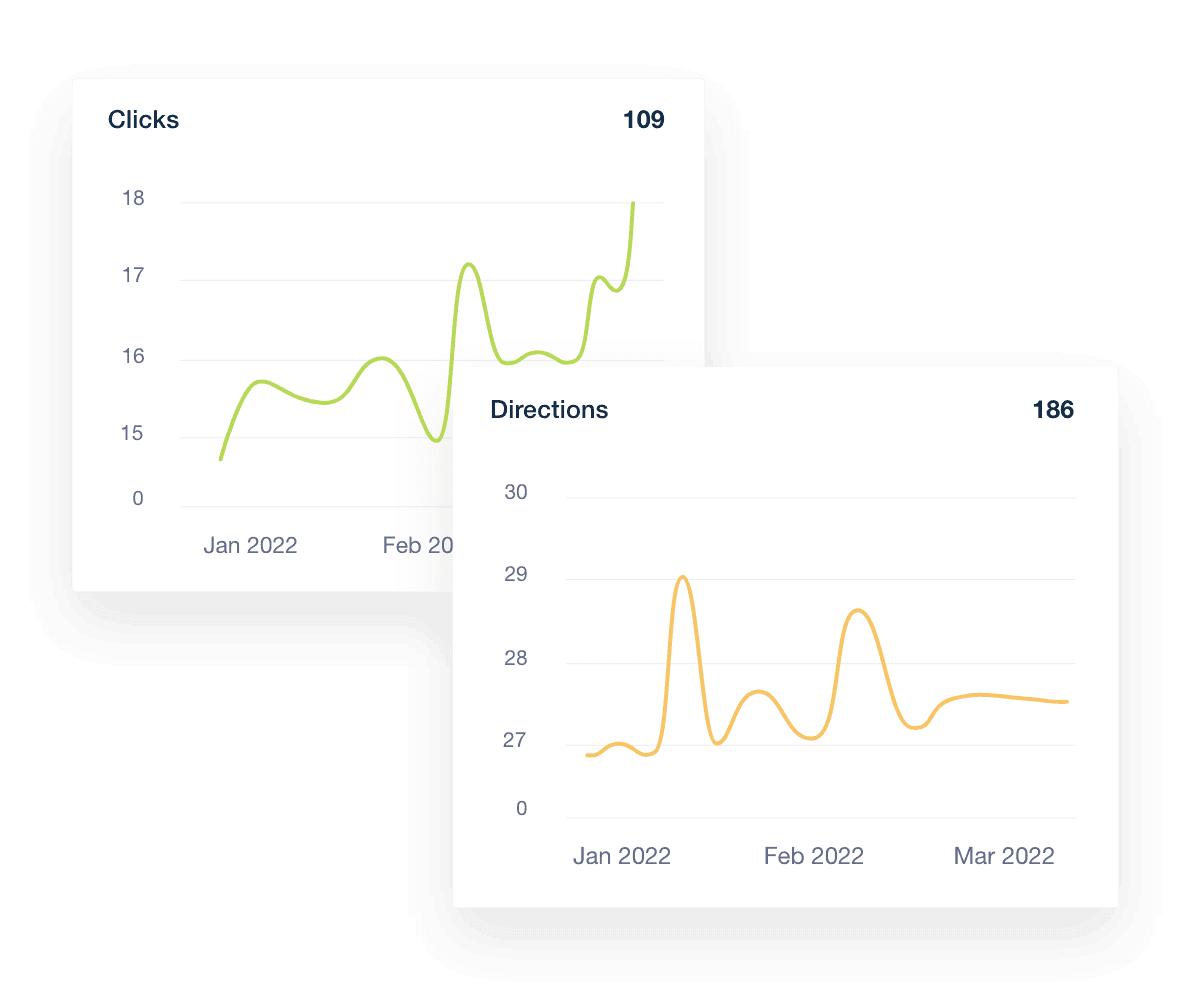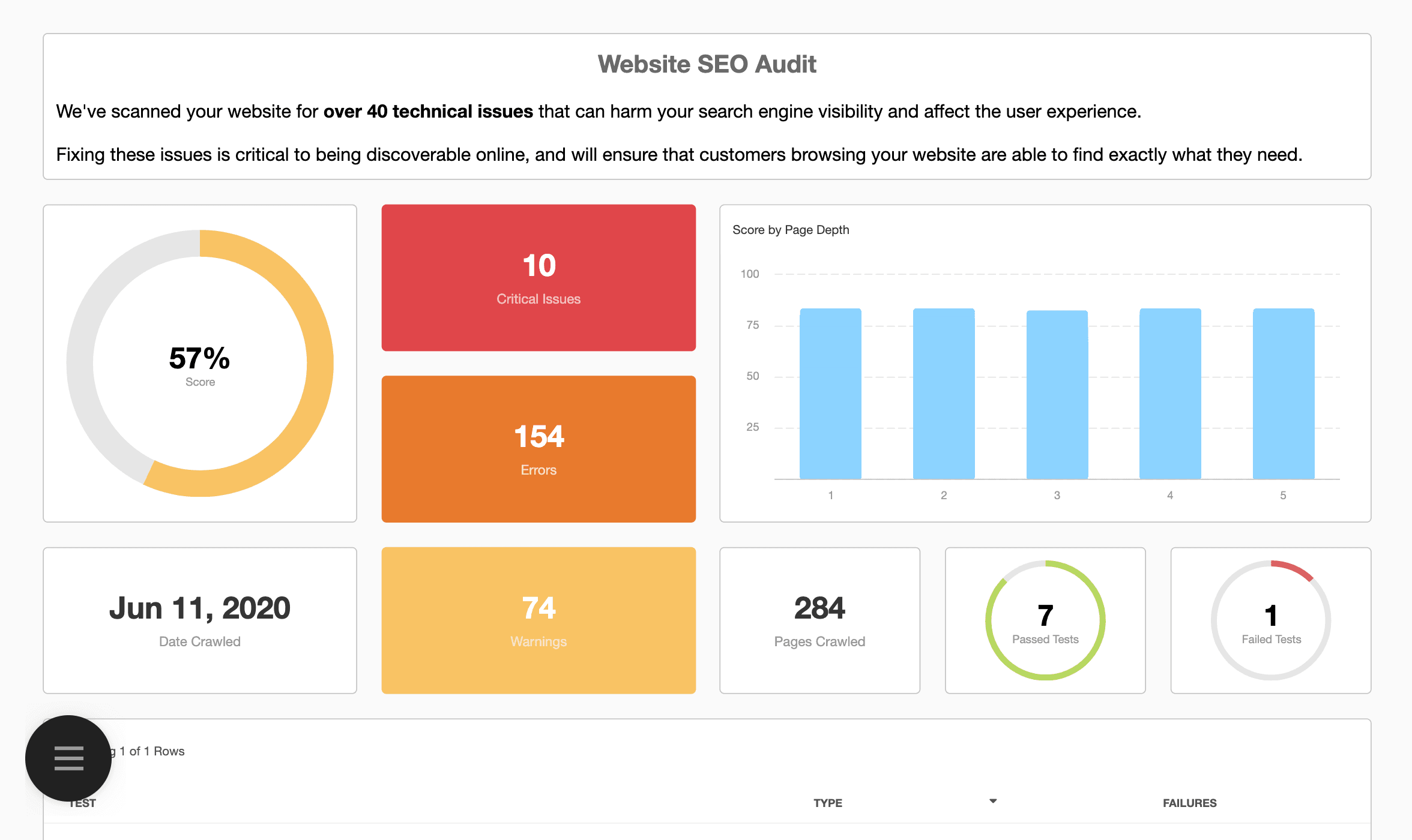Table of Contents
QUICK SUMMARY:
Pitch presentation tips are necessary for marketing agency leaders to successfully communicate their agency's value and secure new business. This article offers expert advice on creating compelling pitch decks, understanding audience needs, and using data visualization.
Much like closing pitchers in baseball, agency leaders are no strangers to sweaty palms and butterflies in the stomach.
Closers have the most demanding job in the sport: Sealing the victory for their team in the final moments of a tight game. One bad toss and it’s all over — the other team scores and nabs the win.
For agency leaders, stepping into the spotlight to lock down a new account or get an existing client to expand their spend is akin to stepping on the mound to face your opponent’s best batter with the bases loaded.
Crafting the perfect business pitch for your agency is an art, and compelling pitch presentations demand a specific set of skills much different from strategy development and creative asset delivery.
This article will provide expert tips to hone your pitch presentation skills and communicate your agency’s value and unique selling points to prospects, clients, and potential investors.
It takes nerves of steel to throw the best pitch the right way at the right time. That’s why practice makes perfect.
Play ball!
What Makes a Great Pitch Presentation?
From fastballs to sliders and knuckle-curves, closers have more than one pitch type in their arsenal.
In the context of pitch presentations, agency leaders are no different: You’ll need a multi-pronged strategy to successfully convince a client your agency is the one they should do business with.
Present a Client-Centric Approach
A client-centric approach requires understanding the prospective client’s business idea, objectives, challenges, and market environment. Conduct thorough research to tailor your presentation to your client’s specific needs.
We use surveys, interviews, focus groups, and observation to gain valuable insights. Surveys are great for collecting quantitative data on an issue, while in-depth interviews let us get more personalized feedback. We also use ‘broad stroke’ techniques in the industry itself by way of forums, meeting groups, and associations they are members of. With this information, we can build a better understanding of our target niche and better serve its needs.
William Smith, Founder, Local Search Technologies LLC
Emphasize how your agency tailors strategies and solutions to each client. Prospective clients want to feel they’re getting a specialized approach, not a one-size-fits-all package. This customization should be evident in your pitch, showing that you’ve considered and prepared unique strategies for them.
Directly address the challenges your client is facing. For example, if the client is struggling with low engagement on social media, present a clear business plan outlining how your agency’s social media strategies will boost engagement and why your approach is effective.
Focus on how your agency’s work translates into measurable results. Clients want to see how their investment will deliver quantifiable outcomes: Increased sales, improved brand recognition, or higher website traffic. This isn't a quick elevator pitch, so take your time and elaborate on how your agency can help the client reach their goals.

After the successful business pitch, create white-label reports with your client's branding with AgencyAnalytics. Start your free 14-day trial today!
Showcase Your Unique Selling Proposition (USP)
Your USP should show what sets your agency apart — your innovative approach, specialized expertise in a particular industry, marketing tech stack, exceptional customer support, etc. Identify that “special something” that makes your agency the best choice for the client's needs.
We always try to give specific examples of where we can provide an impact. Not only is it important to show our capabilities, but also how each of those offerings can individually improve performance for a potential client.
Kara Leonard, VP, FilmFrog
Your USP should be part of your agency's narrative. Tell the story of how your agency came to focus on this particular aspect and how it has driven success for your agency and your clients.
Highlight the long-term value your agency provides. This could include ongoing support, data-driven strategy adjustments, and a commitment to staying ahead of market trends.
Clearly articulate what sets you apart from the competition. For instance, show clients how using AgencyAnalytics enables your agency to track real-time data 24/7 via accessible custom dashboards that track campaign performance — as compared to agencies that only provide manually derived data.
Create, monitor, and display clear goals to prove the value your agency delivers to clients. Try AgencyAnalytics for free for 14 days.
Lean on Client Testimonials
Your client testimonials should be recent, impactful, and relevant to the prospective client. If you pitch to a SaaS client, a testimonial from a successful software brand will be more persuasive than one from a retail client.
Pay attention to the areas where current clients find you provide the most value. Highlight those areas.
Kara Leonard, VP, FilmFrog
Present testimonials as stories rather than mere endorsements. A compelling narrative about how your agency solved a particular challenge or helped clients achieve their goals is more effective than a generic statement.
Whenever possible, include specific results in the testimonials. Phrases like "increased website traffic by 50%" or "doubled online sales in six months" prove your agency’s ability to deliver results.
If possible, use video testimonials. Video testimonials are more engaging and add a personal touch that written testimonials simply can’t match. Seeing and hearing a satisfied client speak about their positive experience with your agency is incredibly persuasive.

Testimonials are a great way to show the value of your agency, especially when you weave them into your pitch’s storytelling narrative.
Keep It Clear and Focused
Identify the key points you want to convey and build your presentation around them. Avoid cluttering your pitch with too much information, which will dilute the impact of your main message.
Make sure the presentation has a clear focus and contains only the most important information. It should have a well-structured narrative that flows logically from one point to the next and strikes an emotional chord with the client.
Ryan Stack, Co-Founder, The Stack Group
Use language that is easy to understand. Avoid industry jargon unless you're sure your client is familiar with it. The goal is to communicate your business ideas clearly, not to impress with complicated terminology.
Organize your presentation with a logical flow. Start with an introduction that sets the context, then your main points, and conclude with a strong closing that reinforces your key message.
Tailor your content to your target audience. This prevents going off on tangents that are not relevant to your client. Emphasize their needs and repeat the key takeaways (i.e., your solutions) at the beginning and end of the presentation.
Be Ready To Address Objections
Client objections are inevitable. Rather than seeing them as roadblocks, address these objections with thoughtful, well-reasoned responses. Prepare by listing common objections you might face based on your past experiences — concerns about cost, doubts about the effectiveness of your strategies, etc.
Always, always be honest and clear. If you can't do something or disagree, be upfront about it. Prospects prefer transparency and honesty over fluff.
Kate Thompson, Head of Commercial, Squidgy
Anticipate objections and weave responses into your pitch presentation. For example, if you know that cost is a frequent concern, proactively explain your pricing and business model and how it provides value.
Each client may have unique reservations based on their specific situation. If you have insight into these, tailor your presentation to address these unique objections. This level of customization will significantly increase your chances of success.
Back up your responses with data and case studies. If a client is skeptical about the results you’ll deliver, presenting a case study that showcases how you've achieved similar results for another client is a powerful way to alleviate this concern.
Emphasize your agency's flexibility and adaptability in meeting client needs. This reassures potential clients that your approach is flexible and will be adapted to suit their unique requirements.
7 Pitch Presentation Techniques To Ensure Buy-In
You’ve prepared your pitch, tailored it to your client, and outlined what they stand to gain from a partnership with your agency. You’ve done your research, assembled your data, detailed your agency's solutions, and left room for discussion and interaction.
You’re set, right? Time to step on the mound.
Not so fast. If you want your pitch to hit the strike zone, you can’t just jump right in without warming up and getting into the proper mindset first.
1. Practice, Practice, Practice
It may seem obvious, but you should practice your pitch presentation beforehand. Doing this gives you ample time to refine the content, work on your delivery, and adjust based on feedback.
Pick the Right Setting
Use a setting similar to where you'll be giving the actual presentation — in front of the computer if it’s a remote pitch or in a boardroom or office if it’s an in-person pitch.
Time Your Practice Sessions
Ensure your presentation fits within the allocated time frame, leaving space for questions and interactions.
Record Yourself Practicing
Video recordings are particularly useful. They allow you to analyze your body language, tone of voice, and overall delivery. Audio recordings help to fine-tune your speech and pacing.
Present in Front of Colleagues or Friends
Ask for honest feedback. Encourage them to critique the content and your delivery, clarity, and engagement level.
Know Your Presentation Inside Out
You should smoothly transition from one point to another and understand the overall narrative arc. Doing this helps you maintain a natural flow, even if you need to skip or revisit sections during the presentation.
And whatever you do, leave plenty of room between the start time of your pitch presentation and any previous engagements. Give yourself a moment to breathe and focus.
I like to make sure I have some quiet time prior to a pitch call to prepare rather than come straight from another meeting.
Kara Leonard, VP, FilmFrog
2. Know Your Audience
No two clients are the same. What worked in a previous pitch presentation isn’t necessarily a recipe for success. Each client has their own needs, expectations, personality, and culture.
Research Who Will Be Present
Understand their roles, backgrounds, and the challenges they face in their industry. Learn about their company culture, values, and recent business activities.
Gauge Your Client’s Technical Understanding
Using industry terms will be effective if your client is well-versed in marketing jargon. However, simplify your language to ensure clarity for an audience less familiar with marketing terminology.
Keep It Conversational
Regardless of the client's profile, a conversational tone makes your presentation more engaging. It encourages dialog and makes the audience feel more involved.
3. Tell A Story
As we touched on with client testimonials, storytelling enables the client to learn and absorb information more quickly and helps them better understand the role your agency will play in their success.
Everyone loves a good story. Center the client as the hero by understanding how they can overcome the issues in their business with your service.
Tyler Hanson, Owner, Hite Digital
Begin Your Presentation With a Compelling Hook
This could be a success story, a surprising fact, or a relatable challenge that sets the stage for your pitch.
Use a Classic Narrative Structure
Start by setting the scene (for example, a client struggling with low engagement), introduce the conflict (the challenges faced), build up to the climax (how your agency intervened), and end with the resolution (the successful outcomes).
Infuse Your Stories With Emotion
Emotional elements make stories more memorable, whether it’s the excitement of tackling a challenge, the tension of a tight deadline, or the satisfaction of achieving results.
4. Pay Attention to Your Body Language
How you present yourself as an agency leader is essential in instilling confidence. Be mindful of non-verbal cues that reinforce or weaken your pitch.
Maintain Eye Contact
Eye contact helps build trust and connection with your client. Aim to make eye contact with different people throughout the room, holding each gaze for a few seconds. For remote pitching, look straight ahead so viewers can see your eyes.
Stand Tall And Confident
Good posture conveys authority and confidence. If seated, lean slightly forward to show interest and engagement.
Use Hand Gestures To Emphasize Key Points
Gesturing makes your speech more dynamic and helps illustrate your points. However, be mindful not to overdo it. Excessive gesturing will distract your client. Deliberate movements suggest composure and authority.
5. Remember To Breathe
Controlled breathing is vital to manage pacing and calm your nerves during a pitch presentation.
Breathe Before Your Presentation
Before starting your presentation, take a few deep, slow breaths. This helps reduce tension and anxiety.
Pace Your Speech
People often speak too quickly when nervous. Use deliberate breaths to slow your pace to a more natural speed and ensure your audience follows along easily.
6. Pause Strategically
Use strategic pausing to enhance the impact of your pitch presentation. Pausing is an incredibly effective tool in public speaking, particularly when trying to persuade or engage an audience.
Plan Your Pauses
While rehearsing, identify critical moments in your presentation where a pause is most effective. These are typically before or after important points, at the end of a section, or when transitioning between topics.
Let Your Client Absorb Information
Complex information or data benefits from a brief pause following its delivery, which gives your client time to process the information and makes your presentation more digestible.
Use Pauses to Regain or Maintain Attention
A sudden pause when the audience seems distracted will draw their focus back to your presentation.
7. Make Your Pitch Interactive
From the start, design your presentation to allow your client to interact with you. After all, the pitch is more about them than about you.
Our golden question, which has often given us our core direction of the pitch is, ‘What has triggered your decision to speak to us?’ This gets right to the heart of their pain.
Kate Thompson, Head of Commercial, Squidgy
Reference Client Experiences and Examples
If your client shares an experience or a challenge, tie it back into your pitch presentation. This shows you’re actively listening and valuing their input, and it will encourage further participation.
Use Rhetorical Questions and Hypothetical Scenarios
Rhetorical questions and hypothetical scenarios help provoke thought and engage the client’s mind. Even if they don’t answer out loud, it encourages your client to think actively about your pitch.
Be Prepared To Adapt Based on Client Interaction
If a particular topic sparks many questions or comments, be ready to explore that topic in more detail. That said, remember to maintain control of your presentation. Guide the discussion to ensure it stays on track.
Encourage Continued Dialogue After the Presentation
Provide your contact information, offer additional resources, and be open to scheduling further discussions. This shows you value ongoing interaction and are committed to building a relationship beyond the pitch.
Pitch Deck Presentation Tip Sheet
Technique | Key Actions | Goal |
|---|---|---|
Practice | Pick the right setting. Time your sessions. Record yourself. Present in front of colleagues/friends. | Refine content, improve delivery, get feedback, and ensure smooth transitions. |
Know Your Audience | Research the audience. Understand their technical level. Use a conversational tone. | Tailor the pitch to the client's needs, expectations, and understanding. |
Tell A Story | Start with a compelling hook. Use a classic narrative structure. Infuse stories with emotion. | Make the presentation engaging, memorable, and relatable. |
Body Language | Maintain eye contact. Stand tall and confident. Use hand gestures appropriately. | Build trust, convey authority and confidence, and enhance speech dynamism. |
Breathing | Breathe before presenting. Pace your speech. | Manage pacing, and reduce tension and anxiety. |
Strategic Pauses | Plan your pauses. Let clients absorb information. Use pauses to regain attention. | Enhance impact, facilitate understanding, and maintain engagement. |
Make Your Pitch Interactive | Reference client experiences. Use rhetorical questions and scenarios. Adapt based on interaction. Encourage continued dialogue. | Foster client participation, adapt to client feedback, and build ongoing relationships. |
3 Common Pitch Presentation Mistakes To Avoid
Do you know what deflates a solid pitch presentation? It’s the little things.
In your mind, everything is going great. You’ve built a good pitch deck — we’ll get to that in a moment — and you know you’ve got the solutions, the data, and the strategy and that you’re the right fit for your client.
Then the win slips away from you even though you thought you were in the zone. What gives?
Here are a few common mistakes that derail a pitch.
1. Slide Dependency
Avoid reading directly from all the slides. As the old saying goes, “Show, don’t tell.” Slides complement your pitch presentation and highlight your narrative but are not the narrative itself.
You’ll also want to avoid cramming too much information, text, or complex graphics onto your slides. Overloaded slides overwhelm and distract. Stick to clear, concise, and visually appealing slides that complement your speech.
The visuals should be engaging and easy to understand, while any data should be used to back up key points.
Ryan Stack, Co-Founder, The Stack Group
2. Uptalk And Monotony
Uptalk is the habit of ending spoken sentences with the intonation of a question, undermining your credibility as a leader. Work on slowing your speech and ending sentences with a downward inflection to convey certainty and confidence. Practice this by reading out loud, paying particular attention to the tone at the end of each sentence.
On the other hand, monotone speeches will make even the most exciting pitch presentation sound dull. Use strategic pausing and the breathing techniques we outlined earlier to help your presentation flow.
3. Pacing
“Wow, that was quick” is a sentence you never want to hear a client or prospect utter at the end of a pitch presentation.
Consciously slow down your speech and enunciate clearly. Aim for a casual pace for your audience to follow along comfortably. Pepper pauses and audience interaction cues to keep your flow conversational.
3 Essential Tips for Creating Successful Pitch Decks
Whether your creating a sales pitch deck or an investor pitch deck, your agency’s deck is the key to communicating your ideas and persuading potential clients or investors to do business with you.
What makes genuinely successful pitch decks? Here are three actionable tips to help you create a compelling agency pitch deck.
1. Visualize the Data
Data visualization simplifies information, making it easier for clients to understand and absorb. Graphs, charts, and infographics convey what pages of text or raw data alone cannot.
Show what you can do. Give specific and visual examples. If you rely too much on text or words, it may not convey much to some potential clients.
Kara Leonard, VP, FilmFrog
Showing the growth of a client’s web traffic or engagement over time through a graph is more compelling than simply stating the numbers. Visuals also evoke emotions, which are powerful persuasion tools.
2. Leverage AgencyAnalytics (and Templates)
Use data to demonstrate your agency's ability to gather, analyze, and draw actionable insights — target market trends, customer behavior analysis, or key metrics for campaign performance.
Introduce AgencyAnalytics and explain how it provides a competitive edge through real-time performance updates available 24/7. This way, the client isn’t left wondering how their campaign budget is being used and they know they’ll always get a clear picture of their ROI.

Showcase your expertise with a professional pitch deck built with one of AgencyAnalytics’s handy templates. For example, pick an SEO pitch deck template to show how you’ll help improve website performance. Try AgencyAnalytics free for 14 days!
3. Focus on Pitch Deck Design
The quality of your entire pitch is only as strong as your pitch deck template design will allow. When pitching new or existing clients, style and substance go hand-in-hand.
Ensure your deck aligns with your agency’s branding. Use your brand colors, fonts, and logos consistently throughout the deck.
Avoid clutter. The slides presented should be clean and straightforward, focusing on one idea or a few key points at a time.
Incorporate high-quality images and graphics that enhance and complement the text, not overpower or distract from it. Avoid low-resolution images.
Use color strategically to highlight key points, differentiate sections, or evoke certain emotions.
Choose fonts that are easy to read, even from a distance or on a small screen (especially if you’re presenting virtually).
Use white space on your slides to help draw attention to the most essential elements and make the presentation slide deck look less crowded.
Proofread multiple times and use grammar and spell-check tools. The best pitch decks are devoid of typos or grammatical errors.
Use a ready-made template. Using a template keeps your deck design consistent, saves time and effort, and allows you to concentrate on content and delivery.
I believe it is important to focus on creating a visually appealing presentation with relevant images and graphics that illustrate each point clearly. I have seen truly horrible-looking pitch decks — the point and image of the slide not being congruent, which makes for a confused prospect. Confused prospects do not become customers.
William Smith, Founder, Local Search Technologies LLC
Agency Tip: New to building your own business pitch deck template? Looking for a pitch deck example as a starting point? Read our comprehensive pitch deck guide to craft your first pitch deck and to find more pitch deck examples.
Tips for Virtual Pitch Presentations
The last thing you want when pitching your agency is to have your pitching skills hamstrung by an unforeseen glitch or have your client be distracted by poor sound or bad lighting.
Before the presentation, make sure your technical preparation is spotless. Check your internet connection, webcam, microphone, and any software you use. Ensure everything is working seamlessly to avoid technical glitches.
Test your sound and lighting conditions. Choose a quiet, well-lit space for your presentation. You want to be visible, not backlit. The background should be professional and free of distractions. Use a lapel mic or a good set of headphones with a built-in microphone for best results. If you plan to go wireless, check and test your settings (Bluetooth, etc.) beforehand.
Finally, familiarize yourself with the features of your virtual platform, like screen sharing, virtual whiteboards, or polling functions.
Close Like a Pro With the Perfect Pitch
Just as a pitcher must understand the batter to tailor each throw, a marketing agency leader must clearly understand the audience to tailor their message effectively. An effective sales pitch should be straightforward, powerful, and on-target, like a well-executed fastball.
Incorporating storytelling in your presentation slides adds a curveball to your repertoire, keeping the audience guessing and engaged. Similarly, leveraging data visualization and AgencyAnalytics in your business pitches provides the finesse of a slider, bringing clarity and precision to your message for more impact.
Don’t forget to regularly hone your skills to ensure each presentation is stronger than the last. Consider feedback as your coach, helping you adjust and improve.
Ready for the big game? It’s time to step up to the mound, keep your eye on the catcher’s mitt, and confidently throw a successful pitch. With each successful pitch deck you create, you'll be closer to making a positive impression, winning clients, and leading your team to victory.

Written by
Francois Marchand brings more than 20 years of experience in marketing, journalism, and content production. His goal is to equip agency leaders with innovative strategies and actionable advice to succeed in digital marketing, SaaS, and ecommerce.
Read more posts by Francois MarchandSee how 7,000+ marketing agencies help clients win
Free 14-day trial. No credit card required.





